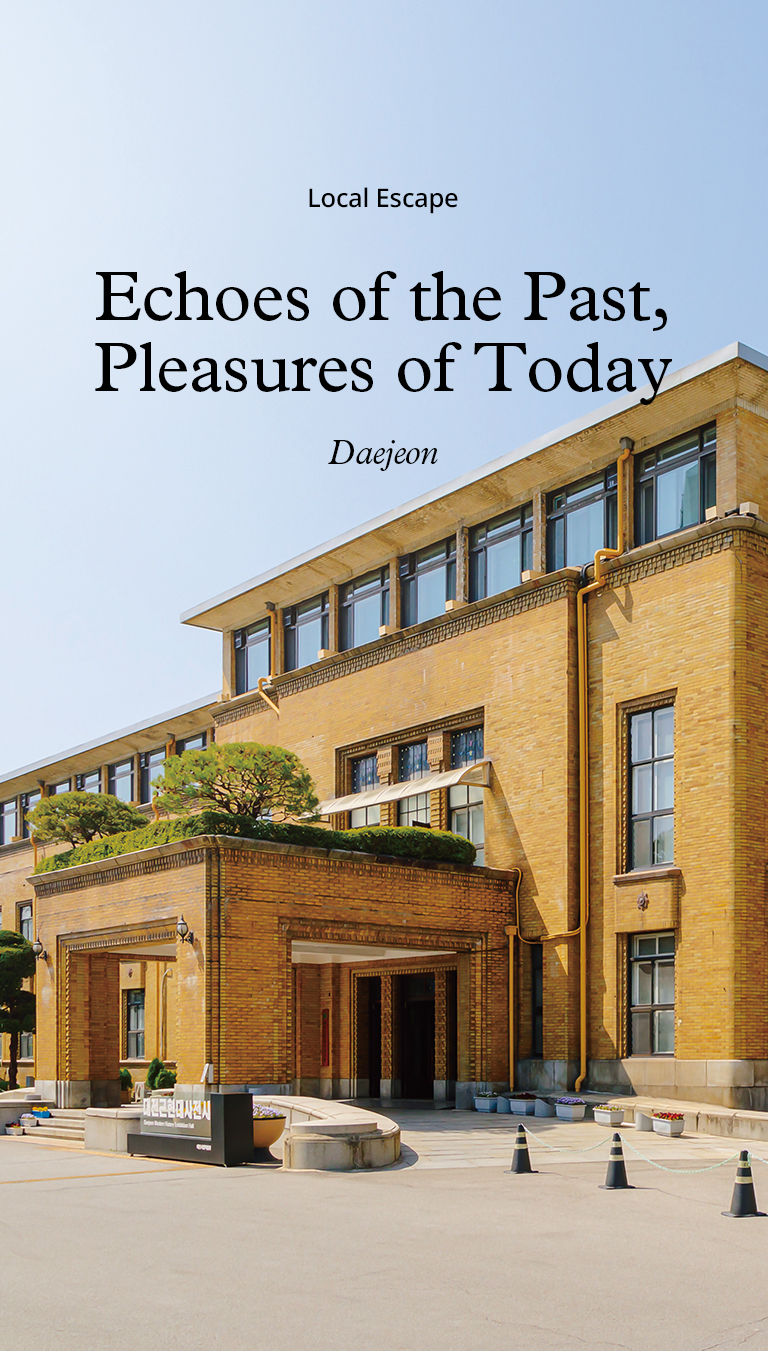
Now known as a paradise for bread lovers and a hub of science and technology, Daejeon is a city that is rich in history. A century has passed since a railroad first transformed this quiet region, but Daejeon preserved its past while embracing the vibrant energy of modern life—creating a landscape that feels both new and familiar.
Writer. Yeo Ji Hyo
Daejeon sits in the heart of Korea and can be reached from Seoul in about an hour by KTX (high-speed train). It cannot be described without mentioning the railroad. Before modern times it was barely a dot on the map, but with the construction of the SeoulBusan railroad in 1904 and the Daejeon-Mokpo railroad in 1914, Daejeon, located at the junction of these two routes, underwent explosive growth. Due to this strategic position, it later became a key highway hub, which means it can now be reached in around two hours from anywhere in the country.
One of the defining aspects of Daejeon is its bread. The city is famous for its bread—in fact, it’s an essential destination for Korea’s bread aficionados. That has made downtown bakeries mainstays with tourists performing what might be dubbed a patisserie pilgrimage.
Considering that Daejeon is not known for its flour mills, what made the city so famous for its bread? The answer to that dates back to the Korean War, in which Daejeon played a critical role. Given its central location at the intersection of multiple railroads, all food and foreign aid ended up passing through the city. That aid often took the form of wheat, which arrived in huge quantities. It was inevitable that some of that wheat would spill over, so to speak, in the transportation hub of Daejeon.
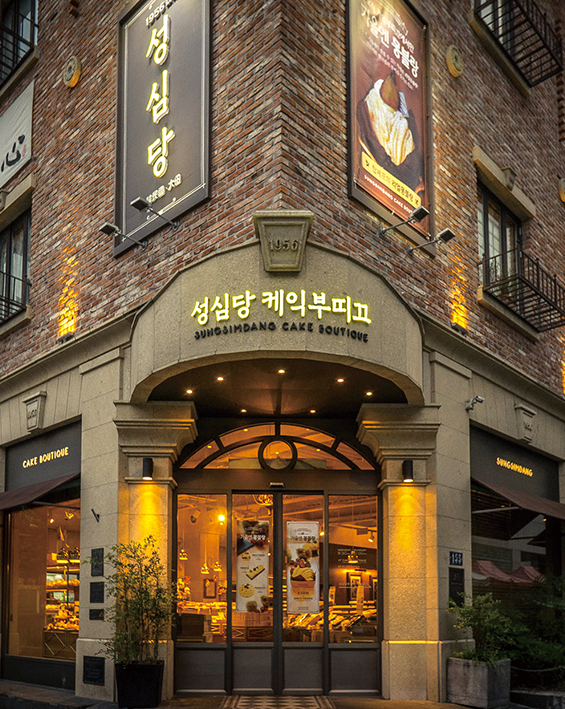 The exterior of Cake Boutique, a cake shop by Sungsimdang,
The exterior of Cake Boutique, a cake shop by Sungsimdang,  Seasonal fruit cakes offered by Sungsimdang © Sungsimdang.
Seasonal fruit cakes offered by Sungsimdang © Sungsimdang.
As a result, numerous bakeries and flour-based food businesses emerged in Daejeon. When there are so many competitors, it’s inevitable that the most competitive establishments will prevail. The successful bakeries that survived that trial by fire have become icons of local culture. Their unique charm and outstanding flavor draw visitors from afar to sample their wares.
Curious about how Daejeon came to be called the “city of bread,” many visitors make their way to Sungsimdang, a famous bakery that has been in operation since the 1950s. The bakery has a compelling origin story: a couple fleeing the Korean War could only travel as far as Daejeon, where they settled down and made a living by selling steamed buns. Today, customers stand in long lines to taste the bread sold here. Trays overflow with delicious pastries, stacked high and ready to be enjoyed. The signature item is a fried pastry stuffed with red beans and topped with a crumble known locally as soboru. But really, all the pastries are visual delights, filling the air with sweet and savory aromas and offering rich, addictive fillings that keep people coming back for more. In short, it’s a feast for the eyes and the nose, tempting every sense.
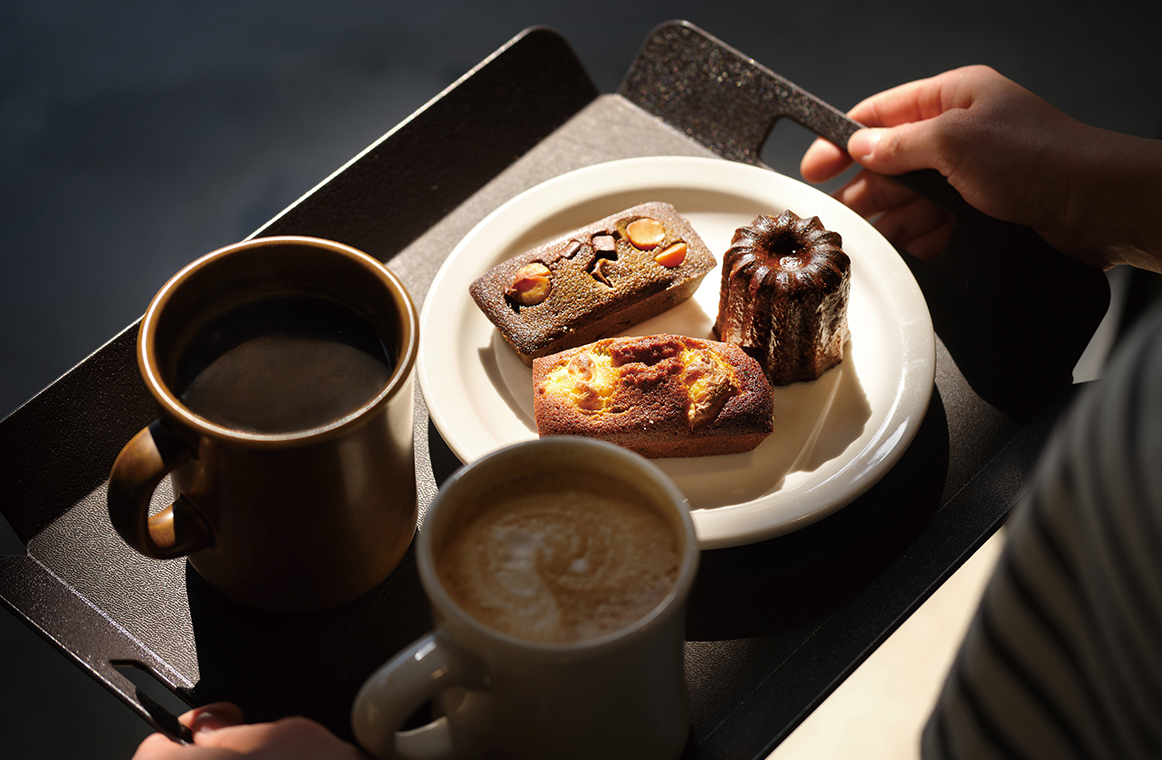 Jeongdong Munhwasa’s petits fours, a popular bakery in Daejeon
Jeongdong Munhwasa’s petits fours, a popular bakery in Daejeon
대전은 한국의 가운데 위치한 도시로, 서울에서 1시간가량 고속철을 타면 닿을 수 있는 곳이다. 이곳은 특히 철도를 빼고 말할 수 없는 도시다. 근대 이전에는 지도에서 찾아보기 힘든 작은 지역이었으나 1904년에 경부선, 1914년에 호남선이 세워지며 두 선의 교차 지점으로서 폭발적인 성장을 일궈낸 곳이기 때문이다. 이런 지역적 특징 때문에, 대전은 전국으로 뻗어나가는 고속도로의 분기점이 되기도 해서, 한국 어디서든지 약 2시간을 할애하면 방문할 수 있는 곳으로서 자리매김했다.
그런 대전을 대변하는 키워드가 있다. 바로 빵이다. 빵 마니아들 사이에서 빵의 성지로 불리는 데다가, 대전 도심 일대의 빵집들을 돌아보는 일종의 순례길이 여행객들 사이에서 무척이나 유명할 정도.
대전에서 밀을 생산하는 것도 아닌데, 대전은 왜 빵으로 유명한가? 대전은 한국 전쟁 당시 중요한 역할을 했다. 한국 중앙에 있고 철도가 연결되어 있어, 식량이나 구호 물품이 모두 대전을 거쳐 갔기 때문이다. 당시 구호물자로서 밀가루가 대량으로 들어왔던지라, 교통의 요충지였던 대전에 밀가루가 많이 퍼지게 되었다.
그런 이유로, 대전에는 밀을 이용한 음식인 빵을 판매하는 곳이 많았다. 경쟁자가 많으면 경쟁력을 갖춘 곳만이 이기는 법. 치열한 경쟁 속에서 살아남은 오늘날 대전 빵집은 저마다의 개성이 뚜렷하고 맛까지 좋아, 오로지 빵을 위해 먼 곳에 있는 사람들까지 불러 모을 정도로 강력한 문화 콘텐츠가 되었다.
대전에 붙은 ‘빵의 도시’란 수식어가 궁금해져 1950년대부터 이어온 대전의 유명 빵집, 성심당으로 향한다. 창업주 부부가 전쟁 중 피란을 갔다가 철도가 끊겨 정착한 대전에서, 생계를 위해 찐빵을 팔며 쌓아 올린 기업이다. 사람들은 이곳의 빵을 먹기 위해 줄을 서고, 서고, 선다. 쟁반에 빵을 쌓아 올린 사람 사이로 먹음직스러운 빵들이 눈에 들어온다. 단팥으로 채운 빵에 고소한 소보루를 얹어 튀겨낸 대표 빵부터, 속재료를 아낌없이 넣어서 계속 먹고 싶을 만큼 중독적인 맛을 자랑하는 각종 빵이 눈을 만족시키고, 고소하고 달콤한 냄새가 코를 자극한다. 얼른 맛보고 싶게 만드는 비주얼과 냄새의 향연이다.
Bread is not the only thread woven into Daejeon’s past. In the old downtown area around Daejeon Station, traces of the city’s history quietly await discovery. Following the broad avenue in front of Daejeon Station for about 20 minutes reveals a boxy building with a cinematic look: the Daejeon Modern History Exhibition Hall. Its dark yellow bricks are tightly stacked, and large windows are set at regular intervals. The brick texture and window design produce an exotic quality rarely seen in Korea.
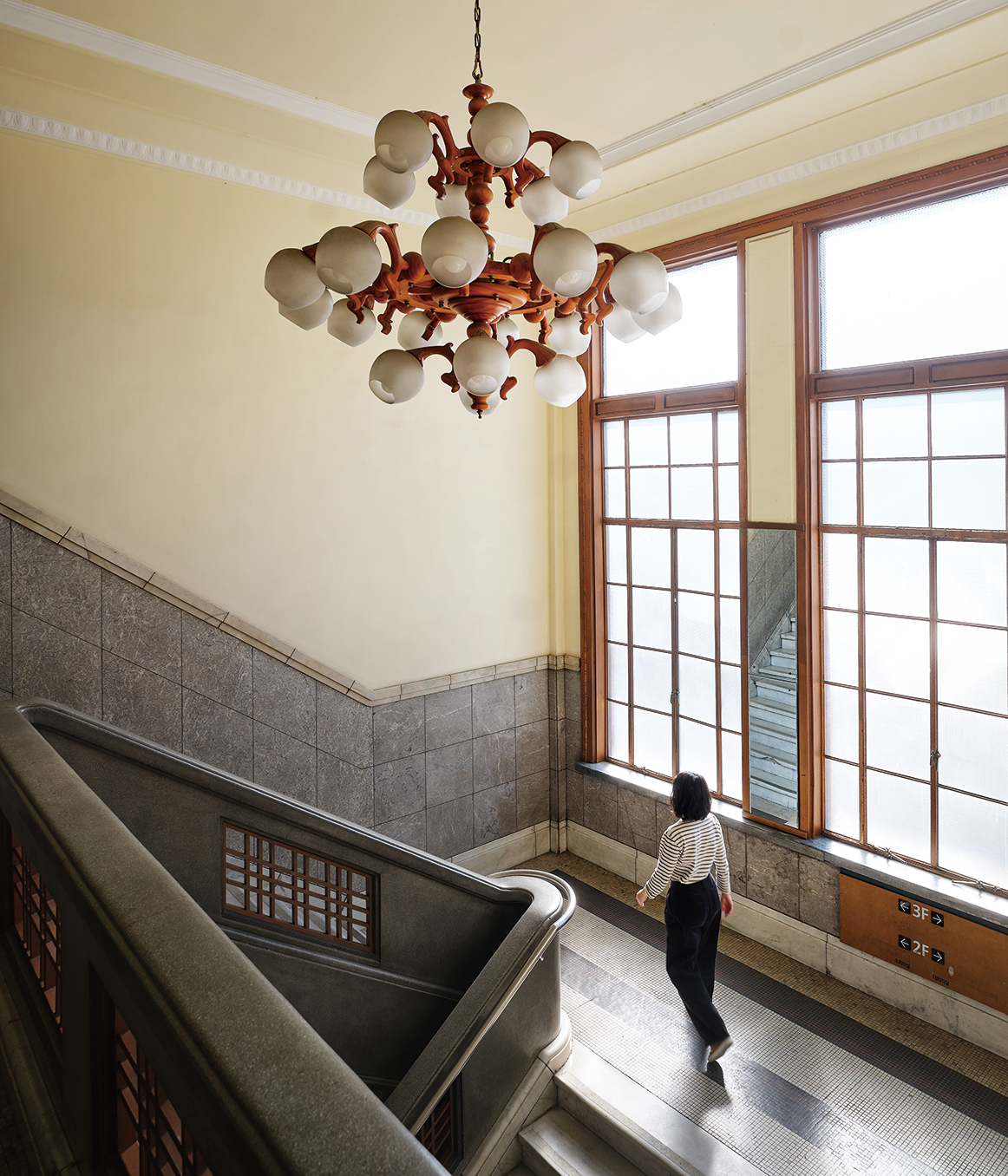 The interior of Daejeon Modern History Exhibition Hall
The interior of Daejeon Modern History Exhibition Hall
Walking into the exhibition hall reveals a space filled with history. Just a few steps inside, the atmosphere is completely transformed. Arched hallways, floor tiles arranged in mosaics, glittering chandeliers, sunlight spilling through narrow windows and marble walls and staircases leading to higher floors create a striking scene. For a moment, the sense of time and place seems to waver, evoking the feeling of being transported into a European building from another century.
This is the former building of the Chungcheongnam-do Provincial office, built in 1932. It continued to serve as the hub of local administration until the provincial office was relocated in 2013. The building was reborn to serve the public in a different way in 2019. This is a historically valuable building that has witnessed the city’s development over the years. It’s also architecturally significant, a testament to the modernist school of the 1930s, and very well preserved for a public building of its time. The exhibition hall has even been used as a set for period films like “The Attorney” and “12.12: The Day” and historical dramas like “Life on Mars,” “Gyeongseong Creature” and “Mr. Sunshine.”
The exhibition hall showcases Daejeon’s journey from its humble beginnings to today. Wandering through its alleyways and rooms, you can feel the weight of history in its walls and façade.
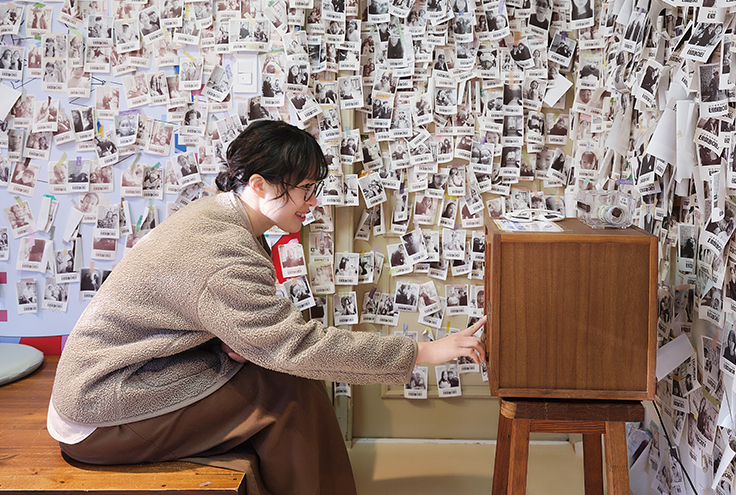 Temiore offers a service that prints instant photos through a receipt machine
Temiore offers a service that prints instant photos through a receipt machine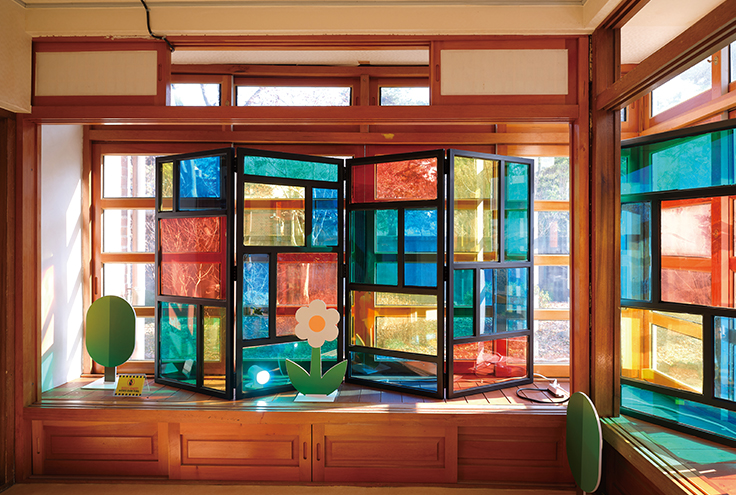 An ongoing exhibition centered at Temiore
An ongoing exhibition centered at Temiore
Another side of Daejeon’s past can be seen at Temiorae, once home to high-ranking officials of the Chungcheongnam-do Provincial office. Opened to the public after the office moved, it differs from the Daejeon Modern History Exhibition Hall in that its cultural programs focus on old houses. Nine buildings, including the former governor’s residence, have been renovated for various purposes yet preserved so well you might think someone still lives there. The vibe here feels more like visiting a friend’s house than an exhibition.
The next stop is Soje-dong, once home to railroad workers. Built behind Daejeon Station by leveling a hill and filling a lake, the neighborhood dates back a century. At first glance, its graying buildings may seem lifeless, but hidden gems—teahouses, cafés and ethnic restaurants—await those who explore. Each alley and corner holds a sense of discovery, as local entrepreneurs breathe new life into this historic district.
Daejeon is a place where regional history and our cultural moment mingle together—on the streets, in the buildings and inside residents’ hearts. Here, nostalgia for the past hobnobs with the present, producing an unfamiliar mood that crops up all over the place. That mood warms the heart and inspires reflection on the past—on all our pasts. Hopefully, for those who someday visit Daejeon, the city will still have the charm its residents have worked so hard to preserve.
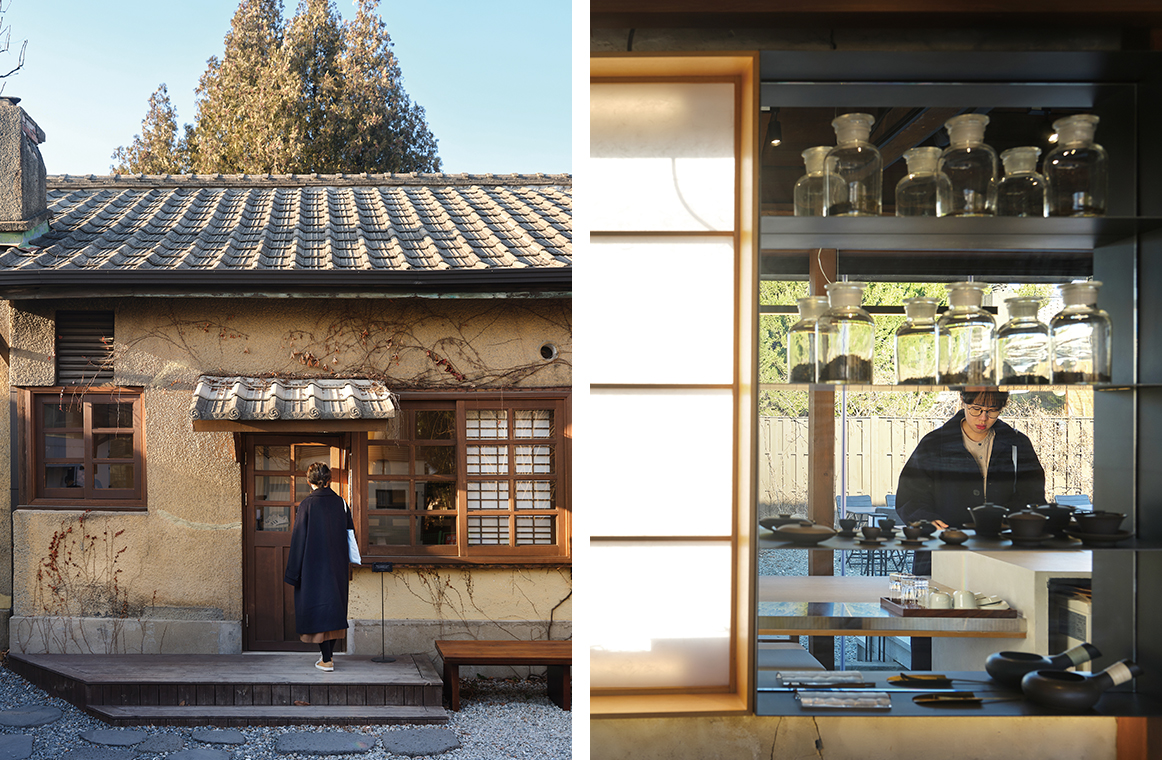 Interior and exterior of R x TEA Collective, located in a century-old building in Soje-dong
Interior and exterior of R x TEA Collective, located in a century-old building in Soje-dong
빵에만 이 도시의 역사가 얽혀있으랴. 대전역을 중심으로 한 원도심에는, 대전이 소중히 간직한 과거의 시간이 고요히 기다리고 있는 곳이 있다. 대전역을 나와 남쪽으로 쭉 뻗은 대로 위를 걷는다. 20분간 걷다 보면, 마침내 영화에서나 등장할 법한 커다랗고 네모반듯한 건물, 근현대역사박물관이 등장한다. 어두운 노란 벽돌이 빼곡히 쌓아 올려져 있고 큼지막한 창문들이 규칙적으로 나 있다. 한국에서 흔히 볼 수 없는 벽돌의 질감, 창살의 구조 등 모든 것들이 어우러져 이국적인 느낌을 자아낸다.
건물이 품은 이야기를 만나러 안쪽으로 이동한다. 몇 걸음을 옮겼을 뿐인데 분위기는 순식간에 반전된다. 아치형 복도, 모자이크 형식으로 타일을 배치한 바닥, 화려한 샹들리에, 햇살이 쏟아지는 길고 좁은 창문, 위층으로 이어지는 대리석으로 만든 계단과 벽. 다른 시간대로 날아온 듯, 갑자기 유럽으로 뒤바뀐 듯 잠시 시공간적 감각이 뒤섞인다.
이곳은 1932년에 세워진 충청남도청의 옛 건물이다. 2013년 충남도청이 다른 지역으로 옮기기 전까지 지역 행정의 중심부로서 역할 했고, 2019년 시민을 위한 공간으로 재탄생했다. 1930년대에 유행했던 모더니즘 양식이 반영되어 있고, 당시 관공서 건물 중에서도 원형이 잘 보존된 편이라 건축적 의미가 깊다. 영화 <변호인>, <서울의봄>, 드라마 <라이프온마스>, <경성크리처>, <미스터선샤인>의 배경으로 사용될 정도라고.
이곳은 더 적극적으로 과거를 말한다. 대전의 근현대사를 전시하여 오늘날 대전이 탄생한 순간부터 현재까지 어떻게 발전해 왔는지 살펴볼 수 있다. 다른 한 편에는 특별전도 진행 중이다. 현재는 1915년 개관하여 2024년 폐업한 유성온천의 이야기를 다루고 있다. 도지사 집무실도 마찬가지다. 공간은 충남도청이 이전하기 전까지 이곳을 거쳐 간 도지사 31명의 이야기를 덤덤히 풀어낸다.
대전의 또 다른 과거가 테미오래에 있다. 테미오래는 과거 충청남도청의 고위 관직들이 머물던 관사촌이다. 근현대역사박물관과 다른 점이 있다면, 테미오래는 ‘집’을 배경으로 문화 프로그램을 이어 나간다는 것. 충청남도 도지사가 살던 곳부터 총 9채의 집을 각기 다른 공간으로 꾸몄는데, 어찌나 관리가 잘 되어 있는지 여전히 누군가가 살고 있을 것만 같은 생생함이 느껴진다.
발길을 옮겨 소제동, 과거 철도 관사촌으로 이동한다. 대전역 뒤편에 있는 이곳은, 일제 강점기 시절 철도 관련 근로자들을 위한 동네였다. 현존하는 근대 관사촌 중 가장 큰 규모이지만, 당시의 에너지 같은 것들은 온데간데없는 조용한 동네다. 이곳의 매력은 탐험해야만 비로소 드러난다. 어디서도 보지 못할 멋스러운 장소들이 회색 건물 사이 사이에 들어서 있다. 찻집, 카페, 다국적 음식점, 등등. 골목을 돌 때마다 다음엔 뭐가 나올까 호기심이 생긴다.
오늘 만난 대전을 이렇게 말하고 싶다. 거리 위에, 건물 속에, 사람들이 든 봉투 안에 지역의 역사와 오늘날의 문화가 섞이는 곳. 과거가 빚어낸 향수, 그것이 현재와 교감하며 탄생한 낯선 분위기가 곳곳에 스며있는 도시. 그것에 비추어 나와 우리의 시간을 생각하게 만들며 마음을 데워주는 곳이라고.